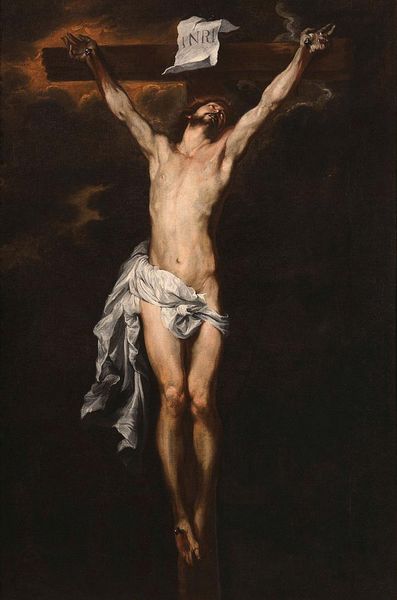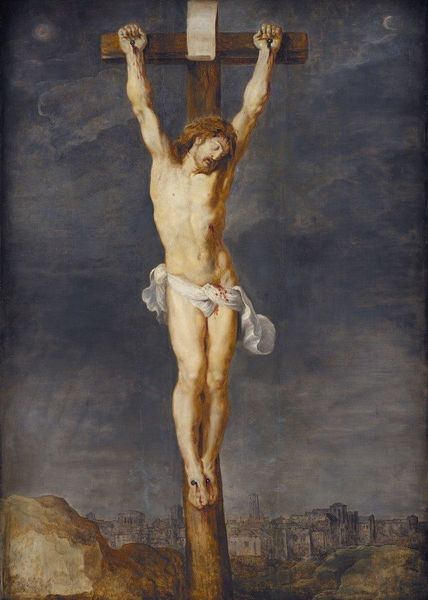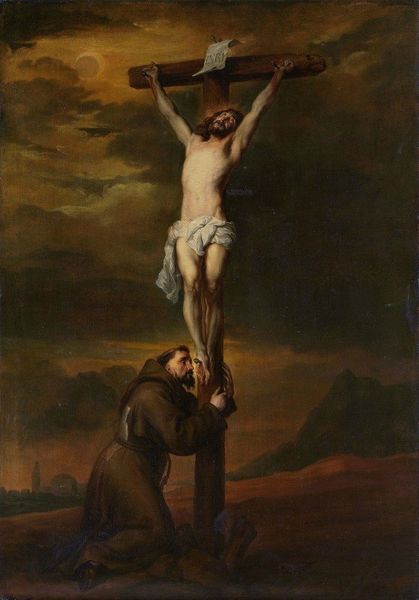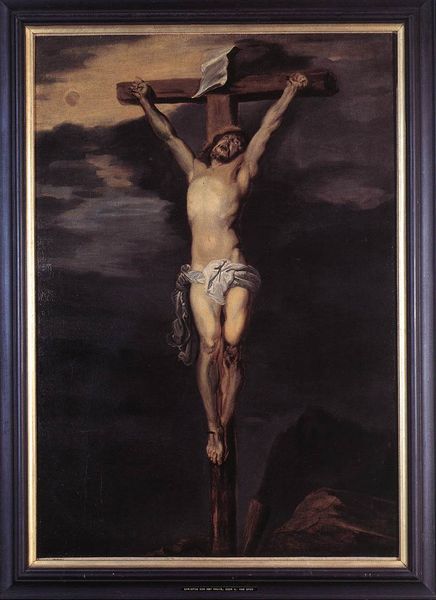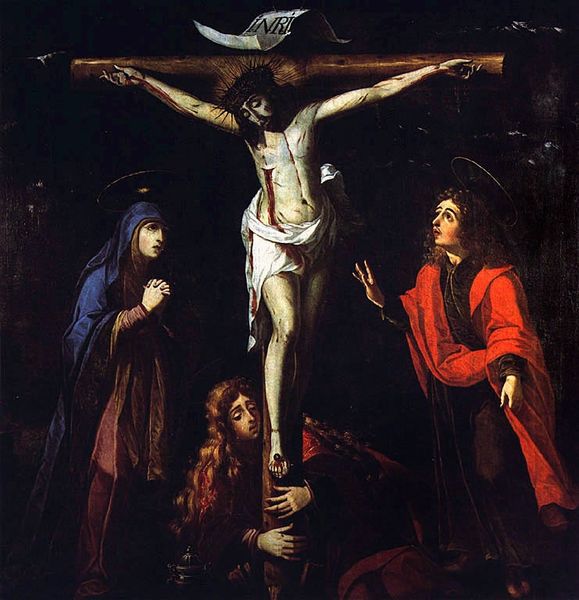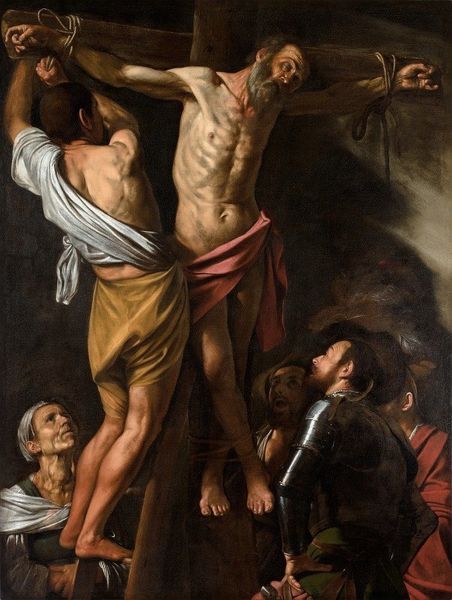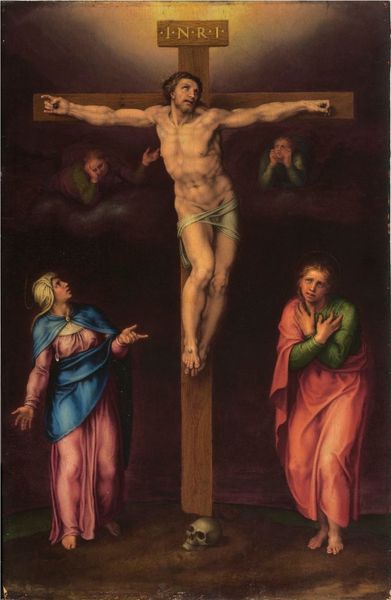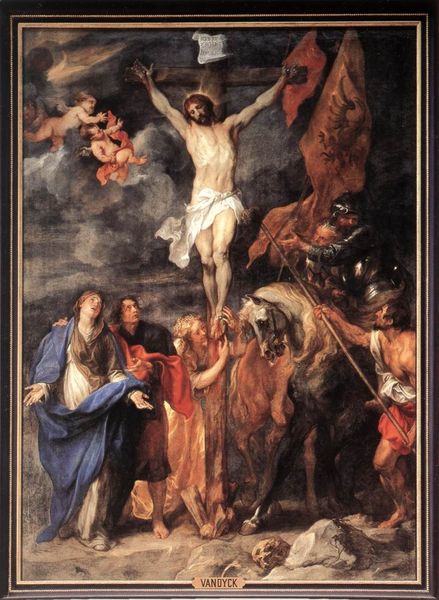
painting, oil-paint
#
allegory
#
painting
#
oil-paint
#
mannerism
#
oil painting
#
chiaroscuro
#
crucifixion
#
history-painting
#
italian-renaissance
#
nude
#
christ
Dimensions: 260 x 171 cm
Copyright: Public domain
Curator: El Greco's "Christ on the Cross Adored by Two Donors," painted around 1590, is quite striking. What are your initial impressions? Editor: There's an intense drama unfolding in this oil painting; the dark clouds churning behind Christ immediately evoke a sense of profound suffering, a weight felt by the two figures at the bottom. The pallor of the nude Christ on the cross starkly contrasts the dark sky behind Him, immediately grabbing the viewer’s attention. Curator: Exactly. Note how El Greco uses mannerist techniques. The elongated, almost unnatural proportions of Christ's body are critical. It’s as though the very form echoes his torment, while the use of chiaroscuro emphasizes the theatricality of the scene, the light sculpting form, creating intense emotional peaks. Editor: True, and I can't ignore how the figures below represent power dynamics. Their placement at the base, gazing up, signifies social stratification of the time, doesn’t it? The donors' pious devotion, underscored by the opulence of their clothing, implicates them as beneficiaries within a system that demanded sacrifice from others. Their inclusion transforms what could be purely a religious icon into something that also illustrates societal forces at play in early modern Europe. Curator: You bring up a valid point regarding their garments and context; though from a formalist viewpoint, their positioning also balances the composition; they act as visual anchors and add dimensionality. Further, see the limited palette – whites, grays, blues, blacks – this elevates the spirituality of the event, removing earthly color and embellishments. The color helps in expressing its overall somber atmosphere. Editor: While the austerity undeniably evokes solemnity, such choices were deliberate for a largely illiterate viewership. Visual storytelling served as critical reinforcement of dogma—linking earthly patronage and spiritual merit through imagery, even to imply power structures using placement of each figure. Art became political rhetoric within this cultural context. Curator: Of course, the devotional context would heavily influence the symbolism here. In conclusion, El Greco created something powerful, regardless of intention, through his expert manipulation of color, light, and form. Editor: And whose repercussions continue to echo across subsequent eras. Indeed, such pieces open vital dialogues between representation, identity, faith, and the broader architecture of domination.
Comments
No comments
Be the first to comment and join the conversation on the ultimate creative platform.



